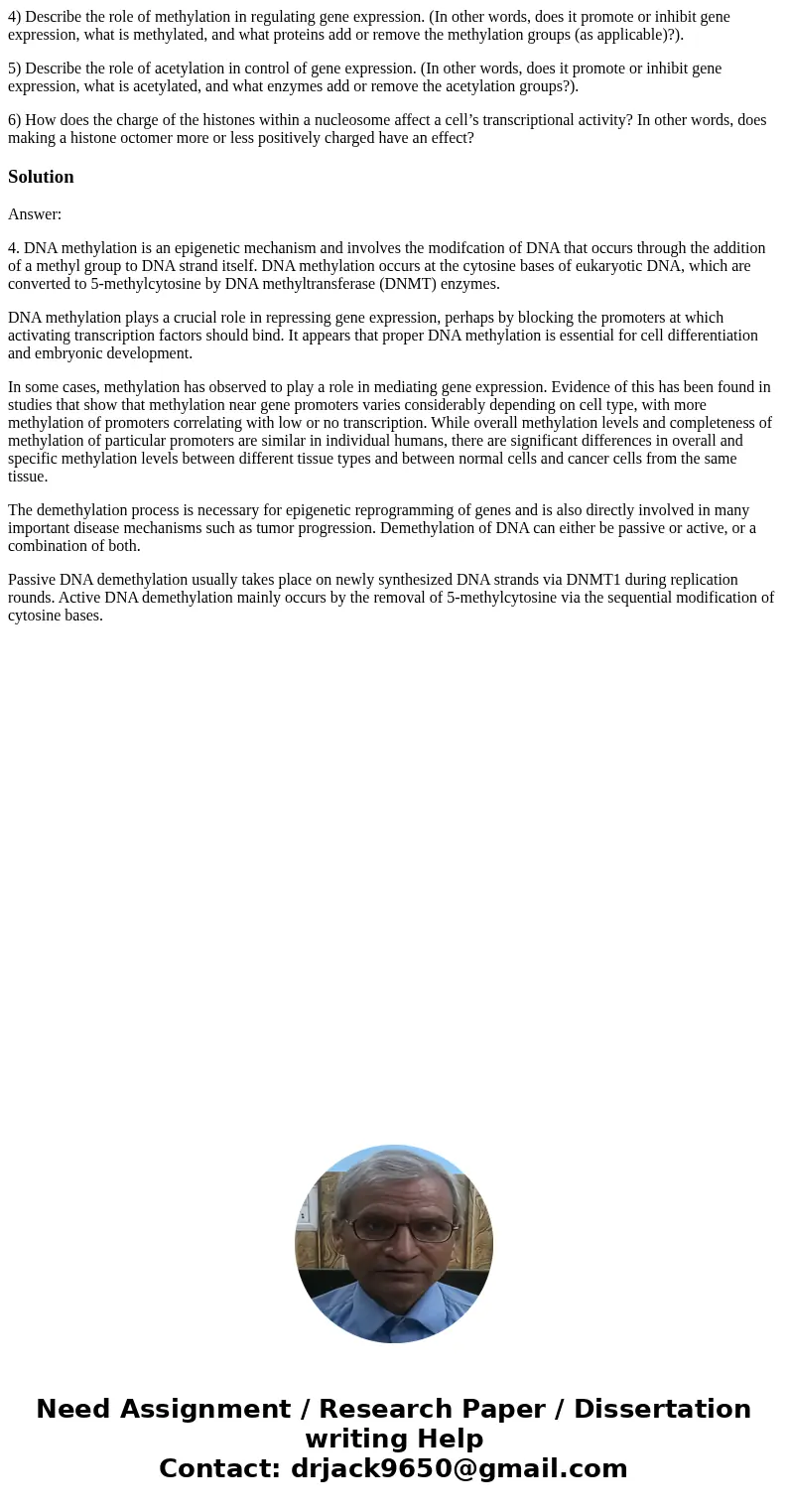4 Describe the role of methylation in regulating gene expres
4) Describe the role of methylation in regulating gene expression. (In other words, does it promote or inhibit gene expression, what is methylated, and what proteins add or remove the methylation groups (as applicable)?).
5) Describe the role of acetylation in control of gene expression. (In other words, does it promote or inhibit gene expression, what is acetylated, and what enzymes add or remove the acetylation groups?).
6) How does the charge of the histones within a nucleosome affect a cell’s transcriptional activity? In other words, does making a histone octomer more or less positively charged have an effect?
Solution
Answer:
4. DNA methylation is an epigenetic mechanism and involves the modifcation of DNA that occurs through the addition of a methyl group to DNA strand itself. DNA methylation occurs at the cytosine bases of eukaryotic DNA, which are converted to 5-methylcytosine by DNA methyltransferase (DNMT) enzymes.
DNA methylation plays a crucial role in repressing gene expression, perhaps by blocking the promoters at which activating transcription factors should bind. It appears that proper DNA methylation is essential for cell differentiation and embryonic development.
In some cases, methylation has observed to play a role in mediating gene expression. Evidence of this has been found in studies that show that methylation near gene promoters varies considerably depending on cell type, with more methylation of promoters correlating with low or no transcription. While overall methylation levels and completeness of methylation of particular promoters are similar in individual humans, there are significant differences in overall and specific methylation levels between different tissue types and between normal cells and cancer cells from the same tissue.
The demethylation process is necessary for epigenetic reprogramming of genes and is also directly involved in many important disease mechanisms such as tumor progression. Demethylation of DNA can either be passive or active, or a combination of both.
Passive DNA demethylation usually takes place on newly synthesized DNA strands via DNMT1 during replication rounds. Active DNA demethylation mainly occurs by the removal of 5-methylcytosine via the sequential modification of cytosine bases.

 Homework Sourse
Homework Sourse